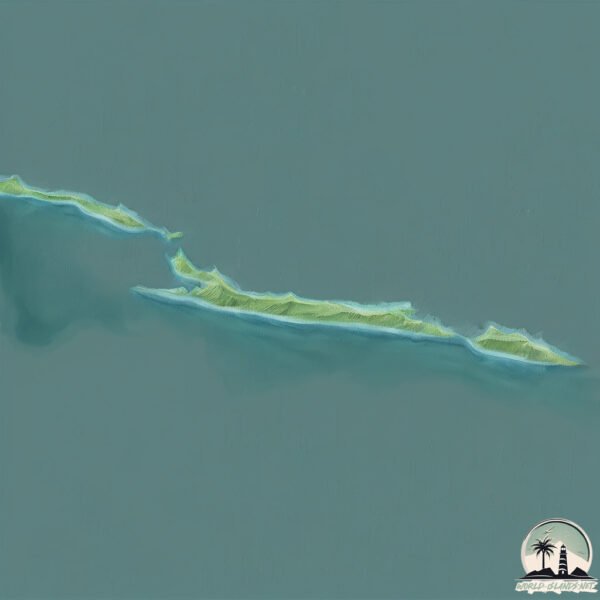Welcome to Sentry , a Continental island in the Hudson Bay, part of the majestic Arctic Ocean. This guide offers a comprehensive overview of what makes Sentry unique – from its geography and climate to its population, infrastructure, and beyond. Dive into the details:
Geography and size of Sentry
Size: 1.031 km²Coastline: 8.2 kmOcean: Arctic OceanSea: Hudson BayContinent: North America
Sentry is a Small Island spanning 1 km² with a coastline of 8.2 km.
Archipel: –
Tectonic Plate: North America – Covers North America and parts of the Atlantic and Arctic Oceans, characterized by diverse geological features and varying levels of seismic activity.
The geographic heart of the island is pinpointed at these coordinates:
Climate and weather of Sentry
Climate Zone: ContinentalClimate Details: Subarctic ClimateTemperature: Cold Summer
Climate Characteristics: Characterized by long, extremely cold winters and short, cool summers, often found in northern latitudes of North America and Eurasia.
Topography and nature of Sentry
Timezone: UTC-06:00Timezone places: America/ChicagoMax. Elevation: -43 m Mean Elevation: -45 mVegetation: Herbaceous CoverTree Coverage: 0%
The mean elevation is -45 m. Remarkably, this unique island barely emerges above the sea level, showcasing nature’s fascinating interplay with the ocean. The island is characterized by Plains: Flat, low-lying lands characterized by a maximum elevation of up to 200 meters. On islands, plains are typically coastal lowlands or central flat areas.
Dominating Vegetation: Herbaceous Cover
Vegetation: 2 vegetation zones – Low Diversity Island
Infrastructure and Travelling to Sentry
Does the island have a public airport? no .
Does the island have a major port? no .
The mean population of Sentry is 0 per km². Sentry is Uninhabited. The island belongs to Canada .
Continuing your journey, Bear is the next notable island, situated merely km away.
The Horrifying Last Moments Of Aaron Gibbons
It was Tuesday, July 3rd 2018, when 31-year-old Aaron Gibbons loaded up his children into his boat and motored the 10 miles to ...
The Horrifying Last Moments Of Aaron Gibbons
It was Tuesday, July 3rd 2018, when 31-year-old Aaron Gibbons loaded ...
It was Tuesday, July 3rd 2018, when 31-year-old Aaron Gibbons loaded up his children into his boat and motored the 10 miles to ...
Why He Didn't Survive North Sentinel Island: A Survival Guide
This is North Sentinel Island. One of the most mysterious places in ...
This is North Sentinel Island. One of the most mysterious places in the world. Home to the most isolated tribe in the world for the ...
North sentinel island in india
#shorts #youtubeshorts #history
North sentinel island in india #shorts #youtubeshorts #history facts ...
North sentinel island in india #shorts #youtubeshorts #history facts about history interesting history facts world history facts ...
Canada is classified as Developed region: G7: Group of Seven – Major advanced economies, including Canada, France, Germany, Italy, Japan, the United Kingdom, and the United States. The level of income is High income: OECD.
News – Latest Updates and Headlines from Sentry
Stay informed with the most recent news and important headlines from Sentry. Here’s a roundup of the latest developments.
Loading...
Please note: The data used here has been primarily extracted from satellite readings. Deviations from exact values may occur, particularly regarding the height of elevations and population density. Land area and coastline measurements refer to average values at mean high tide.

